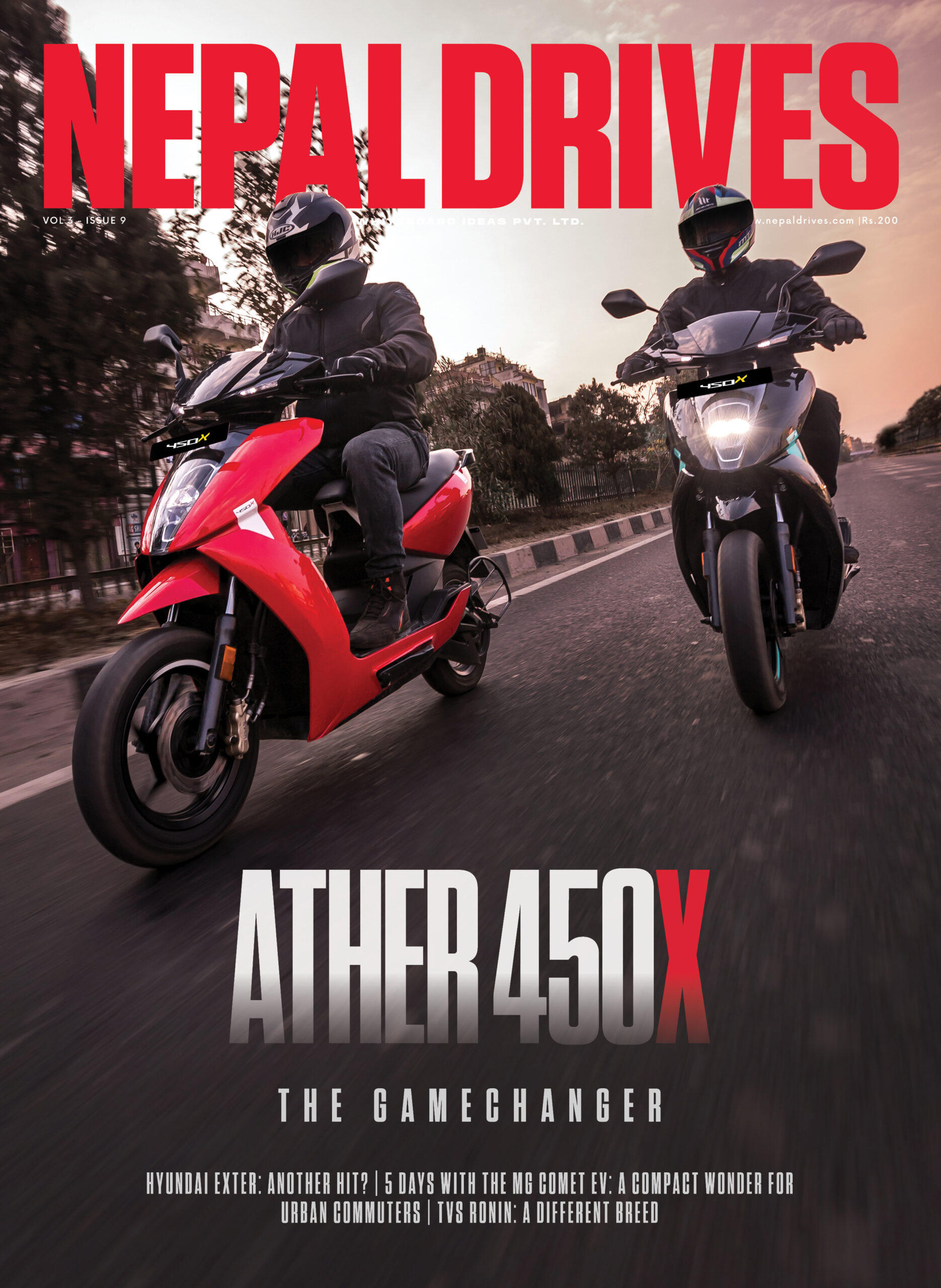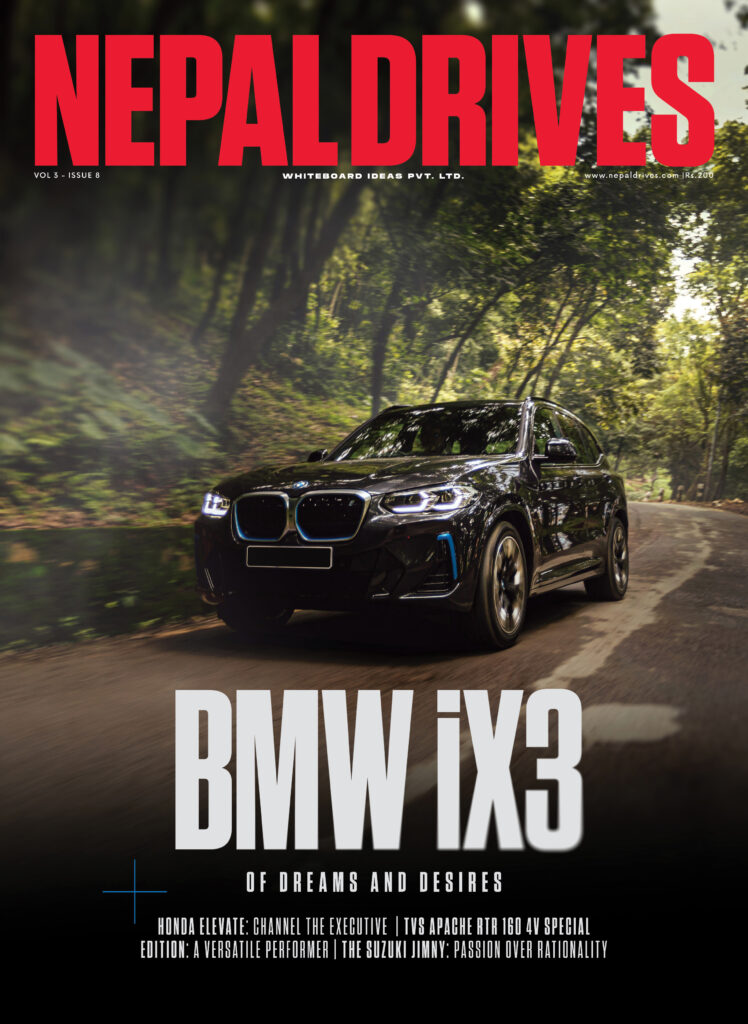Brightside For EVs: Positive Steps Taken By Nepal Government In 2021
Share



The past couple of years have been difficult and there have been times where we had trouble finding the silver lining of things. However, it isn’t all bad, it never is. A significant upturn in the automotive world has been the imminent paradigm shift towards electrically powered vehicles all over the world.
Reserving a seat on the electric bandwagon is Nepal. With the aim to sell only electric vehicles by 2088 B.S. (2031 A.D.), the government of Nepal has taken positive steps in order to achieve its goal. Its continuity with other possible positive changes will pave our way into the carbon-neutral future of mobility.
With that in mind, here are a few things from the brighter end of the automotive spectrum in Nepal that happened in 2021.
1. Excise duty on electric vehicles have been completely waived off.
We saw the excise duty on electric vehicles imposed when only a handful of companies had managed to bring and start selling their vehicles. This led to a rise in the price of electric vehicles which were mostly an economical choice rather than a rational one. Sales of electric vehicles decreased leaving dealerships with vehicles standing on their floor for longer than they would have liked to see.
However, during the last budget announcement, the excise duty was completely waived off resulting in a significant decrease in the price, increase in demand and a subsequent increase in interest of many automobile companies to import more electric vehicles for this market.
2. Excise duty on both plug-in hybrids and mild hybrids have been reduced to 40% from the previous 60%.
One of the crucial reasons for people to stick to internal combustion engines was because it is their primary vehicle and they need to use it for every piece of land they want to drive it in. There is a midway option for people who would like to get the benefit of high mileage, low emissions, and pure electric drive as well. Plug-in hybrids are vehicles with mostly petrol engine and a battery pack and a motor that can work separately or together as desired. With this choice, customers can enjoy an all-electric range of 50km or above depending on the vehicle. And while two power sources work together, the mileage of the car drastically increases and the carbon emission comes down by several folds per kilometer. These benefits are similar in other forms of hybrids but they can’t be driven in all-electric mode only. In pursuit of decreasing carbon emissions, promoting these vehicles which emit way less carbon is a good step forward.
3. Previously set custom duties of 80% on all EVs have been cut down to 10% on vehicles up to 100kw capacity, 15% on vehicles between 100 and 200kw capacity, 30% on vehicles between 200 to 300kw capacity and 40% on vehicles above 300kw capacity.
At this moment, we are still in the very early stages of electric mobility and the cars that reach us are usually in the lower end of the power and battery capacity. So, imposing identical duties on cars would affect the vehicles that are meant for the mass market. This rule separates the boundary to differentiate the target of the vehicle.
4. To promote the conversion of petrol and diesel vehicles into electric, the government said the converted vehicles will be exempt from the annual renewal fee for five years.
Will we start converting for the logical sense or for an emotional appeal is yet to be seen but once all new vehicles become of a different breed, the old ones are deemed to be aliens. If you’re maintaining an old vehicle or one whose dealership doesn’t exist anymore, you’ll know how this is going to turn out. For a country like India and China, it will be easier to recycle the vehicles and use the metals at least for the new ones. But for us, converting the vehicle which can further be upgraded with a new battery pack and more powerful motors is a better choice. Imagine a converted V8 Land Cruiser or your family’s first car.
5. The Government has set standards to employ Nepalese people, use local resources and add value to both the social and financial wellbeing of the area they set up the plant for two-wheeler assembly plants.
For this industry to grow, we need people who have worked in them to get out and create something on their own or help people who are doing so. Having people who have experience of the automobile production facility is very important for our future in this sector.
6. Vehicles import margin have changed from 1% to 50% making it more expensive where electric vehicles remain an exception among imports by government, diplomatic missions and hospitals.
This one is more of a direct impact on the ability of dealerships to now place an order for new electric vehicles far more comfortably than for an oil-powered one. The demand for these vehicles are already growing and this rule helps the supply side of the business. Other than this, the rise in fuel prices and decrease in the cost of electricity is also indirectly promoting people to move to electric vehicles.
7. Nepal Electricity Authority (NEA) says the process of installing 52 charging stations for electric vehicles has begun and will be completed by April 2022.
The value of electricity will increase exponentially if electric vehicles are the future of mobility. The farthest point you can drive your vehicle is the last point for refueling /charging and its range after that. For an electric vehicle, that last point isn’t many in number so the travel is restricted by their nature. Every other factor like the price, availability, practicality, comfort and convenience is similar to their carbon-emitting sisters but their chargers are very limited. With over 50 chargers from different companies in different locations, most of them cater exclusively to their own customers. We are slowly seeing the rise in chargers that will charge all sorts of electric vehicles and with NEA adding these themselves, private companies venturing in it alongside the vehicle importers and dealers, we expect to see the rise in the number of chargers very soon. Kathmandu to popular outing destinations and major highways are the initial target for these setups.
8. Ban on import of expensive vehicles lifted
This is a tricky one. This rule will very largely benefit oil-powered vehicles with bigger engines and that is going against the goal… but, not entirely. Right now, electric vehicles are expensive because their batteries are expensive. In many cases, batteries are half of the cost of the vehicle. Not all but many electric vehicles right now in the market crosses the $50,000 cap and so does plug-in hybrids. Lifting this ban will allow two different, but similarly expensive cars to come into the market but if that particular buyer is aiming for a hybrid or an electric, that is carbon well saved.
We import all of our cars and most of our bikes, we might not be at the forefront of innovational change but we can definitely be ahead with our policies. Being a small country, the number of vehicles we need to convert or dispose of to only have electric vehicles on the road are way less than the ones in our neighbouring countries’ hands. At the same time, there are many companies that have promised 10 or more different models of electric cars under their name by 2025, and that is what we will have to promote and import. The faster we lay down the public charging infrastructure and promote importing these vehicles, we might reach our goal faster than we have expected.
Also Read: 2021 In Review: 21 Highlights Of The Nepalese Automobile Sector










